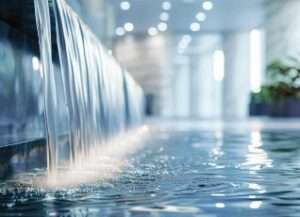Successful plumbing engineering involves the comprehensive understanding and meticulous control of waterborne pathogens, with a particular focus on Legionella. These harmful pathogens can infiltrate building water systems through various means, such as contaminated water sources or inadequate water treatment.
To effectively mitigate the risk of Legionella and other waterborne pathogens, plumbing engineers must possess in-depth knowledge of the specific characteristics of these microorganisms, their transmission routes, and the factors that contribute to their proliferation. By implementing robust water management strategies into their system designs, plumbing engineers play a critical role in safeguarding public health and ensuring the safety of building occupants.
Understanding Legionella
Legionella is a gram-negative bacterium belonging to the Legionellaceae family, which encompasses more than 60 species and serogroups. Among these, approximately half have been linked to various diseases. Notably, Legionella pneumophila is responsible for over 90% of reported cases of Legionnaires’ disease, a severe form of pneumonia that is contracted through the inhalation and aspiration of water droplets.
Legionella growth in building water systems
Legionella, a bacterium found naturally in surface and groundwater sources, typically exists in low concentrations in the source water. Legionella and waterborne pathogens can withstand municipal treatment processes and proliferate within building water systems that provide suitable growth factors. Legionella exhibits growth within a specific temperature range, temperatures commonly found in building water systems. Studies show elevated temperatures may reduce the potential for Legionella growth, however, it’s important to consider the impact of factors such as scale, biofilm, and water quality in buildings, as these factors may impact the effectiveness of temperature on Legionella and pathogen growth.
Impact of biofilms
Biofilms, which are complex communities of microorganisms, consist of cells that adhere to each other and often to a surface. These intricate structures can harbor both pathogenic and non-pathogenic bacteria, creating a diverse and dynamic ecosystem. By providing a protective shield, biofilms enable bacteria to withstand physical forces and disinfection measures, making them resilient and persistent. Moreover, biofilms serve as an ideal breeding ground for bacterial growth, amplification, and recolonization, perpetuating their presence and potential impact.
Factors increasing risk
Several factors contribute to the increased risk of Legionella and other waterborne pathogen outbreaks in buildings. These factors include the design of complex plumbing systems, which can create stagnant water areas that promote bacterial growth. Additionally, warm water environments provide an ideal breeding ground for pathogens, while increased water age further allows for the accumulation and proliferation of harmful bacteria. Moreover, low disinfection residual levels in the water supply can fail to effectively eliminate these pathogens. It is important to note that construction and renovation events in buildings can introduce additional vulnerabilities, disrupting the plumbing system and potentially exacerbating the risk of outbreaks.
Sediment risk and damage
Sediment buildup in plumbing systems is an additional risk factor. Sediment can accumulate over time, creating an environment that supports the growth of Legionella and other bacteria. Moreover, sediment can cause corrosion and damage to plumbing equipment, further increasing the risk of bacterial growth and system failure.
Methods of Legionella reduction
Engineers play a crucial and essential role in managing and reducing the risk of Legionella. By deepening their understanding of the impact of water quality on piping systems and considering Legionella risk during the design phases of building water systems, engineers can effectively implement comprehensive strategies to minimize the risk of Legionella outbreaks. The ASHRAE Standard 188, a widely recognized industry standard, establishes minimum requirements for Legionella risk management in building water systems. This standard provides clear direction and specific requirements for designing and maintaining building water systems that are safe and compliant. By adhering to these guidelines, engineers can ensure the health and well-being of building occupants while effectively mitigating the risk of Legionella contamination.
For plumbing engineers, it is crucial to comprehend and regulate waterborne pathogens, such as Legionella. By implementing engineering solutions and performing risk assessments, the potential risk these pathogens pose to water quality and occupants of a building can be greatly diminished.


